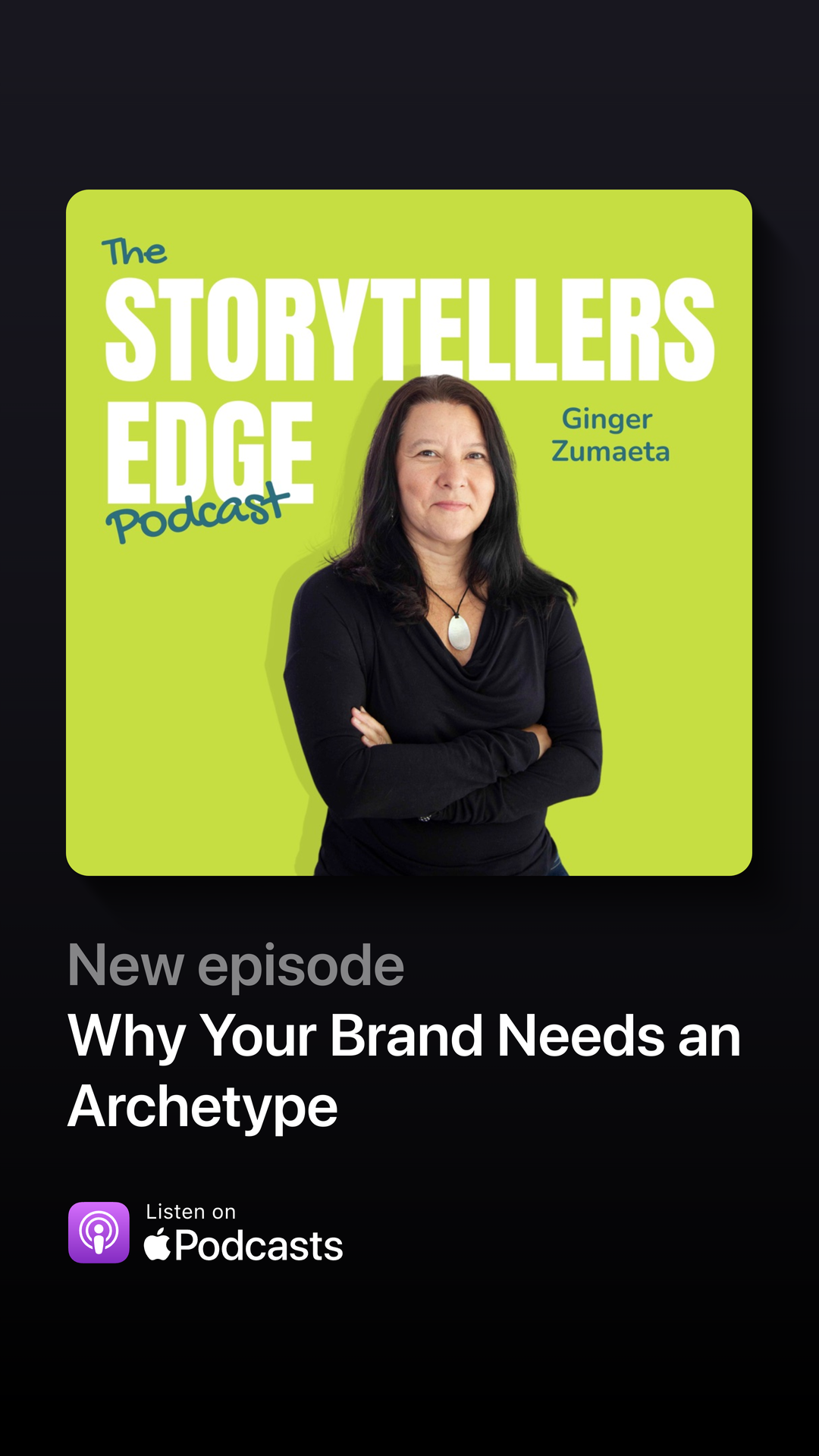Why Your Brand Needs an Archetype
%20(40).jpg)
Most choices aren’t just choices...they’re signals.
Oat milk, trail shoes, ergonomic chairs, those $118 leggings… we tell ourselves it’s logic. Most of the time, it’s identity.
That’s the point of this episode.
If you want your message to land (and stick), stop selling features and start clarifying the role you play in your customer’s story.
Enter archetypes.

On the surface, they look like branding theater.
Used properly, they’re the fastest way to make your brand instantly recognizable, and emotionally sticky.
Here’s what archetypes do:
→ Give your brand a recognizable role people “get” fast
→ Create a consistent POV that tightens copy, visuals, and decisions
→ Help buyers feel what your brand means to them, not just what it does
Here’s what they’re not:
→ A costume you put on once
→ An excuse for generic slogans (“innovative, scalable, secure…”)
→ A substitute for strategic clarity
At Motive3, we use archetypes as a strategic lens, not a slogan. They act like magnetic north--quietly pulling copy, design, onboarding, and even product choices into alignment.
In this episode of The Storyteller’s Edge, Ginger unpacks:
• What archetypes really are (Jung’s universal roles) and why our brains love them
• How to pick a primary archetype without overthinking it (choose one anchor first)
• How to use archetypes to stand out in crowded categories (be the “anti” of your category’s default)
• Real-world feel: Nike (Hero), Patagonia (Explorer), Liquid Death (Rebel), Adobe/Notion (Creator)
• A quick fictional demo (Vitapath) showing how the Caregiver lens rewires onboarding, UI, and headlines
Quick frames you can steal:
• Fintech as Sage → “Advanced analytics for smarter decisions.”
• Fintech as Creator → “Build the future of finance your way.”
Same product. Different role. Different customer resonance.
Try this (on 3 sticky notes):
- Pick your primary archetype (just one).
- Write one sentence “in character.” (Rebel: “We break rules so you can break through.” Caregiver: “We’re here for more than your symptoms.” Hero: “You’re stronger than the obstacle.”)
- Audit three touchpoints—homepage headline, onboarding flow, sales one-pager. Would someone still recognize it as you if your logo vanished?
Signals you’re drifting:
• Your tone changes from channel to channel
• You default to functional filler words (next-gen, scalable, seamless)
• Your team can’t answer, “Is this something our archetype would say?”
🎧 This episode of The Storyteller’s Edge is your guide to using archetypes as a clarity tool. Use them to turn “what you do” into “who you are” in your customer’s life, so your message stops sounding interchangeable and starts sounding inevitable.
Tiny challenge: pick the archetype, write the one-liner, run the 3-touchpoint audit. Your brand will feel sharper by tomorrow.




%20(60).png)
%20(59).png)
%20(58).png)
%20(57).png)
%20(42).png)
%20(39).png)
%20(43).png)
%20(44).png)
%20(45).png)
%20(46).png)
%20(47).png)
%20(48).png)
%20(49).png)
%20(50).png)
%20(51).png)
%20(20).png)
%20(52).png)
%20(53).png)
%20(54).png)
%20(55).png)
%20(56).png)




